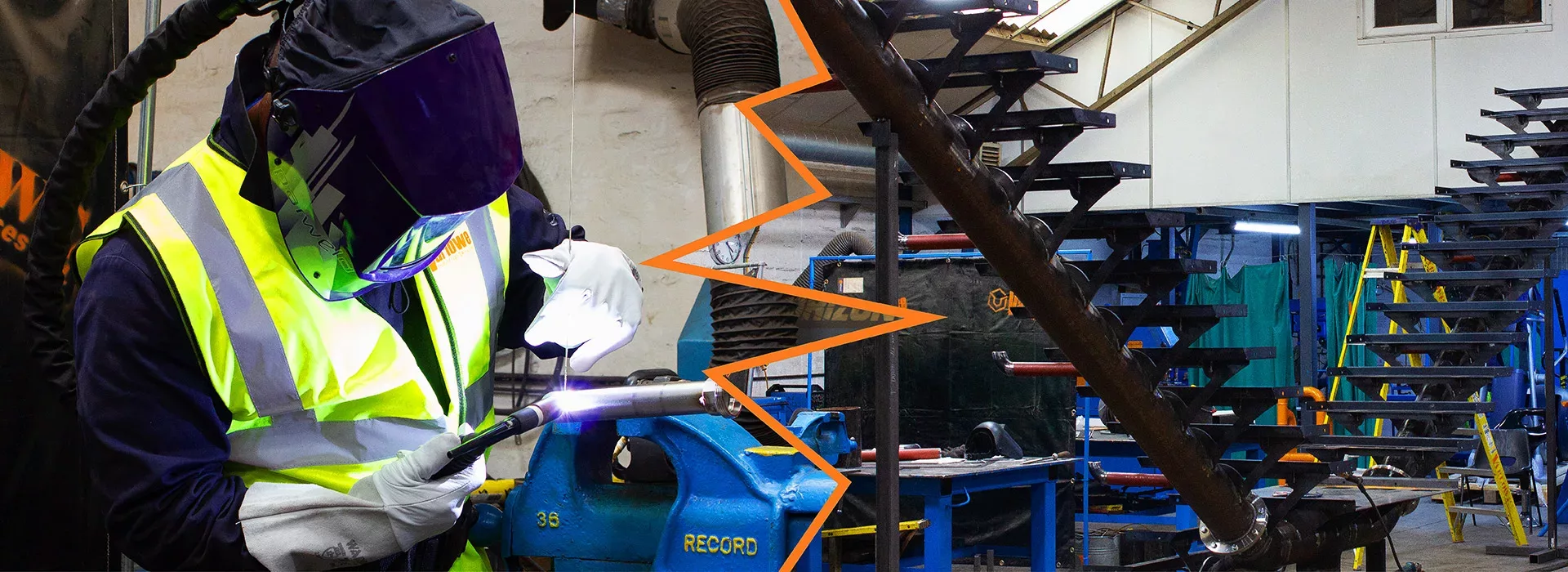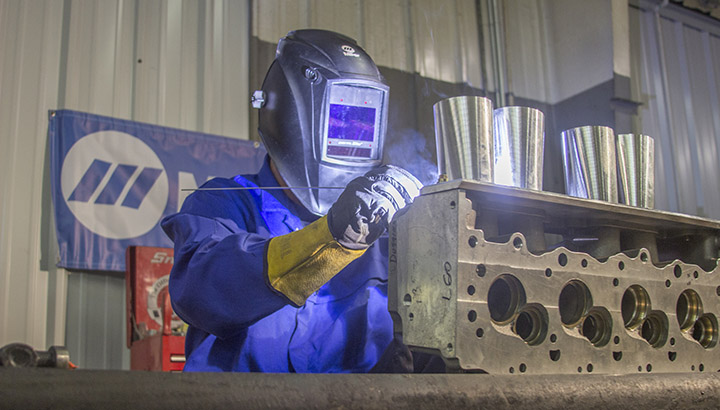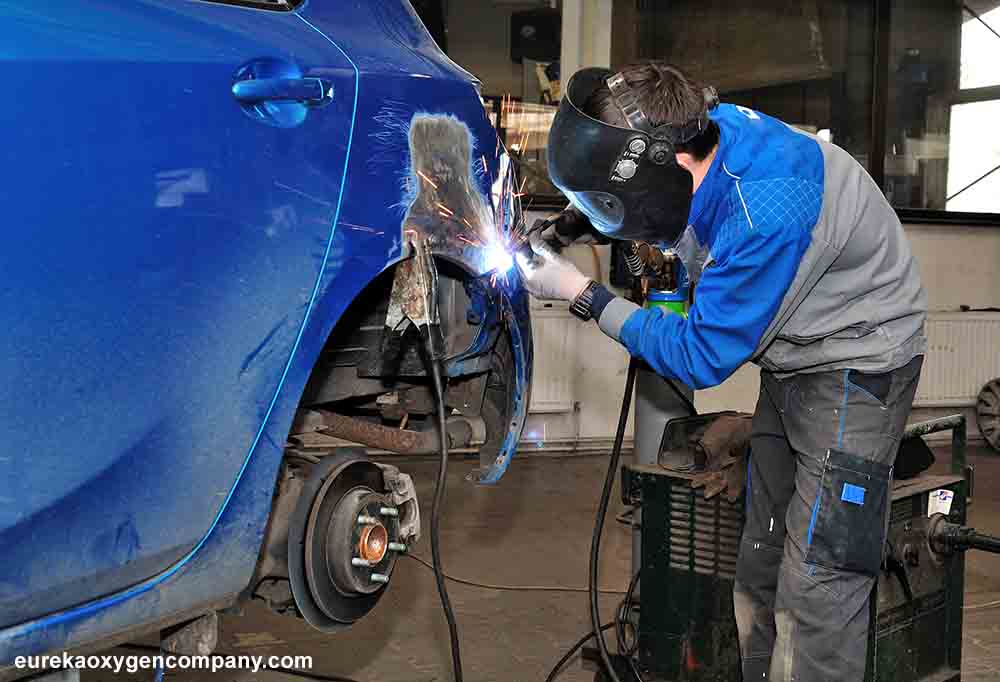Reliable fixes for poor fusion from Montana Mobile Welding and Repair
Typical Welding Repair Service Issues and How to Address Them Properly
Welding repair services typically encounter a variety of problems that can endanger the stability of the final item. Typical problems consist of insufficient infiltration, porosity, and misalignment, among others. Each issue provides distinct challenges that call for certain approaches for resolution. Comprehending these issues is necessary for welders aiming to enhance their abilities and outcomes. This discussion will certainly explore these typical welding repair work problems and efficient approaches to resolve them.
Insufficient Penetration
Poor infiltration takes place when the weld metal stops working to completely fuse with the base material, resulting in weak joints and potential architectural failings. This problem often stems from inadequate warm input, inaccurate electrode angle, or inappropriate welding speed. Welders might encounter insufficient infiltration because of a mistake of the needed parameters for a specific product thickness or type. Additionally, contamination on the base material's surface area can prevent reliable bonding, aggravating the trouble. To attend to poor penetration, welders must ensure proper setups on their tools and preserve a clean work surface area. Regular assessment of welds is recommended to recognize any deficiencies early, enabling timely improvements and the prevention of jeopardized architectural integrity in welded settings up.
Porosity
Porosity is an usual problem in bonded joints that manifests as tiny gas bubbles trapped within the weld steel. This issue can endanger the integrity of the weld, causing decreased strength and potential failure under anxiety. Montana Mobile Welding and Repair Fabrication. Porosity normally arises from contamination, wetness, or improper welding strategies, which permit gases to get away right into the molten weld swimming pool. To attend to porosity, welders must assure correct surface area preparation, keep a tidy functioning setting, and utilize suitable welding specifications. Additionally, picking the best filler material and securing gas can alleviate gas entrapment. Regular assessment and screening of welds can aid recognize porosity early, guaranteeing timely rehabilitative activities are taken, consequently maintaining the high quality and integrity of the bonded framework
Misalignment
Imbalance in welding can develop from numerous factors, including incorrect setup and thermal growth. Comprehending the root triggers is important for effective resolution. Several correction techniques are readily available to straighten components and guarantee structural honesty.
Root causes of Imbalance
Welding imbalance typically originates from a range of underlying issues that can compromise architectural honesty. One key cause is incorrect fit-up of components before welding, which can result in spaces and uneven surfaces. Variants in thermal growth throughout the welding process can additionally result in distortion, especially if the products being signed up with have various coefficients of development. Additionally, poor fixturing and securing might fall short to hold elements securely in position, leading to movement throughout welding. Poorly kept equipment, consisting of welding machines and tools, might present disparities in the weld bead, additional contributing to misalignment. Operator mistake, stemming from insufficient training or experience, can additionally play a considerable role in creating misaligned welds.

Modification Techniques Offered
Resolving imbalance efficiently requires a mix of rehabilitative methods customized to the details concerns at hand. One common approach is using components or jigs to hold components in the appropriate setting during welding, guaranteeing regular placement. Additionally, pre-heating the materials can assist minimize distortion and improve fit-up. For significant misalignment, mechanical adjustment methods, such as using hydraulic jacks or clamps, can be employed to deal with the placement prior to welding. Post-weld warmth therapy might also be essential to ease stress and anxieties brought on by misalignment. Careful evaluation and change throughout the configuration stage can prevent misalignment problems from ending up being considerable troubles, promoting a smoother welding process and enhancing general architectural stability.
Distortion
Distortion is a typical difficulty in welding that can arise from various aspects, including uneven heating & cooling. Comprehending the sources of distortion is necessary for executing effective avoidance techniques. Addressing this issue not just improves structural stability however also boosts the overall high quality of the weld.
Root causes of Distortion
When based on the intense warmth of welding, products typically undergo adjustments that can lead to distortion. This sensation primarily develops from thermal growth and contraction throughout the welding process. As the weld location heats up, the product increases; upon cooling, it acquires, which can produce inner tensions. In enhancement, irregular home heating across a workpiece can intensify these anxieties, causing bending or flexing. The sort of product also plays a substantial role; metals with differing thermal conductivity and coefficients of growth may react in different ways, bring about uncertain distortions. Additionally, poor joint style and poor fixturing can add to imbalance throughout welding, enhancing the likelihood of distortion. Recognizing these reasons is crucial for reliable welding repair service and avoidance strategies.
Avoidance Techniques
Reliable avoidance strategies for distortion throughout welding concentrate on regulating heat input and guaranteeing proper joint layout. Maintaining a constant warmth input aids to decrease thermal growth and contraction, which can lead to distortion. Utilizing techniques such as pre-heating the work surface can additionally lower the temperature gradient, promoting uniform heating. Additionally, choosing suitable joint designs, such as T-joints or lap joints, can boost stability and reduce tension focus. Executing correct fixturing to secure the workpieces in place better help in maintaining alignment throughout the welding procedure. Staggered welding series can distribute heat a lot more evenly, preventing localized distortion. By using these techniques, welders can substantially lower the likelihood of distortion and improve the overall quality of their welds.
Cracking
Cracking is a typical concern run into in welding repairs, typically arising from various variables such as inappropriate air conditioning rates, product choice, or insufficient joint preparation. The event of cracks can significantly compromise the stability of the weld, resulting in prospective failings during procedure. To resolve this concern, welders have to first assess the source, making certain that products are suitable and appropriately selected for the details application. Additionally, regulating the cooling rate throughout the welding procedure is crucial; rapid air conditioning can generate stress and anxiety and bring about cracking. Correct joint design and prep work additionally add to minimizing the danger. Carrying out these approaches can improve weld top quality and resilience, ultimately lowering the possibility of fracturing in ended up weldments.

Insufficient Fusion
A significant issue in welding repair services is insufficient fusion, which happens when the weld metal does not adequately bond with the base product or previous weld passes - Belgrade. my sources This flaw can lead to weaknesses in the joint, possibly jeopardizing the stability of the bonded structure. Variables adding to insufficient combination include insufficient warm input, inappropriate welding strategy, and contamination of the surfaces being signed up with. To address this issue successfully, welders need to ensure proper pre-weld cleaning and surface area preparation, along with readjust their welding parameters to achieve appropriate infiltration and fusion. Routine evaluation during the welding procedure can likewise help identify insufficient fusion early, enabling timely corrective actions to enhance the total top quality of the weld
Overheating
While welding repair work can enhance structural stability, overheating presents a significant challenge that can result in product deterioration. Too much heat throughout welding can modify the mechanical homes of steels, causing reduced strength, raised brittleness, and bending. This phenomenon is especially important in high-stress applications where architectural dependability is paramount. Identifying getting too hot can entail aesthetic evaluations for staining or distortion, as well as checking temperature level throughout the welding procedure. To alleviate the dangers connected with overheating, welders should utilize appropriate methods, such as managing heat input, changing travel speed, and utilizing suitable filler materials. Additionally, applying pre- and post-weld heat treatments can aid recover material properties and boost the general quality of the repair work, making certain long-lasting performance and security.
Regularly Asked Inquiries
What Are the Common Indications of a Welding Defect?

How Can I Examine My Welds for Quality?
To check welds for top quality, one can utilize aesthetic evaluations, ultrasonic screening, and radiographic techniques. Each strategy assures structural honesty, recognizes defects, and verifies adherence to defined requirements, eventually boosting the reliability of the welded joints.
What Safety Safety Measures Should I Take While Welding?
When welding, one ought to focus on safety by wearing proper individual protective tools, guaranteeing proper air flow, protecting flammable materials away, maintaining a tidy work area, and understanding environments to avoid crashes and injuries.
Can I Fix a Weld Without Remodeling the Entire Joint?
Repairing a weld without remodeling the entire joint is feasible, relying on the damages (Montana Mobile Welding and Repair Welding). Techniques such as grinding, adding filler material, or utilizing a welding procedure can efficiently resolve particular flaws while preserving the bordering structure
What Equipment Are Important for Effective Welding Repair Works?
Necessary welding table devices for efficient welding repairs include a welding equipment, cord brush, grinder, protective gear, clamps, and filler materials. Each device plays a vital duty in ensuring top quality and safety and security throughout the repair procedure. Porosity generally emerges from contamination, moisture, or incorrect welding methods, which allow gases to get away into the liquified more info here weld swimming pool. Poorly kept devices, consisting of welding devices and tools, might present incongruities in the weld bead, additional adding to misalignment. When subjected to the extreme warmth of welding, products frequently go through modifications that can lead to distortion. Splitting is an usual concern run into in welding repairs, typically resulting from numerous aspects such as inappropriate cooling prices, product choice, or poor joint prep work. A substantial concern in welding repairs is insufficient fusion, which occurs when the weld metal does not properly bond with the base product or previous weld passes.